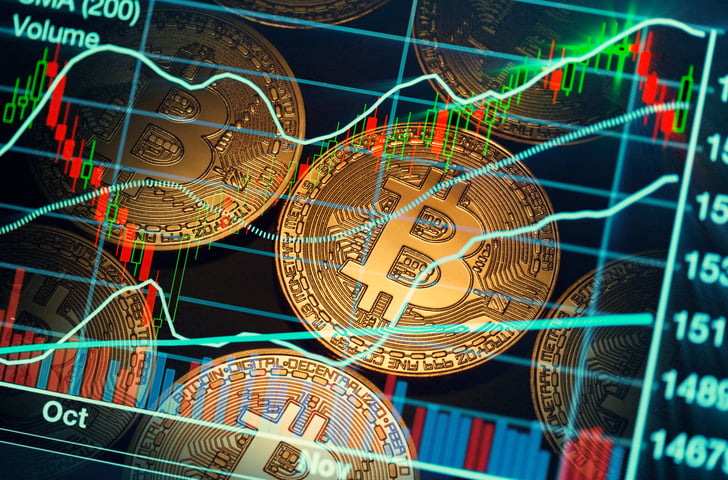When it comes to crypto like bitcoin, there’s a fallacy going around. See if you can spot it when I apply it to other assets…
Do you like tulips? Do you use Amazon? Then you’re a terrible investor. Because of the Tulip Bubble of 1636 and the tech stock bubble of 2000. Don’t you know they crashed?
Nobody believes this argument, of course. It’s absurd to associate the price of tulips in financial markets to flowery things we like to buy… or buy because we’re expected to. And Amazon is rather useful, regardless of whether you own the stock or not.
There is a lot to learn from this when it comes to our cryptocurrencies today. Because rather a lot of people are conflating the speculative mania with the whole point of cryptocurrencies.
If you’re interested in what cryptocurrencies are all about you can click here and leave me alone.
If you’re still here, let’s get back to the story.
Tulips are now a 200-million-euro business in Dutch exports alone. That’s not bad for a bubble that burst hundreds of years ago.
It’s not that things are smooth sailing for the industry. The New York Times reported on how bad conditions got in 2020 for the tulip growers:
For tulip growers in the Netherlands, Friday the 13th of March this year was a true horror show. When tulip stems came up at the country’s largest flower market in Aalsmeer, the prices stalled over and over again at zero.
Frank Uittenbogaard, a director of JUB Holland, a 110-year-old family farm in Noordwijkerhout, made the tough decision to destroy his tulip stems — 200,000 of them.
All in, about 400 million flowers, including 140 million tulip stems, were destroyed in a month! That’s what happens when you’re not allowed to visit people any more.
But the point is that the speculative mania gave way to a booming industry, and some rather nice tulips too. Many of which I saw in person earlier this year when I visited the Japanese version of Tulip Mania at some sort of garden show.
Turning to tech stocks, it’s rather similar. The tech bubble burst in 2000, leaving a trail of financial destruction, no doubt. But the internet today is rather ubiquitous. Everyone, except the Japanese government it seems, uses it for just about everything.
Of course, some tech stocks really did boom in the way that tech bubble investors had hoped. We’ll get back to that in a moment.
First, I want to point out that one of the key ideas of the internet is its scalability. Before the days of radio and records, music was an in-person sort of profession. That gave a lot of people a lot of jobs. Not many of them earned much though. That was because the audience each time was limited to how loud the musician could be. Perhaps that’s why bagpipes were invented by the Scots.
Radio and records meant that people could make money off their music wherever their records could play or the radio could be heard. We began to get global superstars, and a lot of… less successful musicians… lost out.
But digital music, and now subscription services, mean that every piece of music competes on a global market with everyone else’s. It’s the ultimate scalable good. In fact, any given song could in theory be played by each person in the world with access to the internet at the same time.
You might think that this has left a jobs market for rather few, but very good, musicians. But I think that you’d be wrong.
I used to listen to a German heavy metal band that used bagpipes and sang in Latin. Try finding that niche 200 years ago! And if you’re a player or singer of that sort of music, good luck finding your niche audience to make your hobby pay.
So, although technology has meant every musician competes with every musician in the world, they can all find their little customer niches too.
Now, let’s apply all this to cryptocurrencies…
There’s no doubt that cryptos have become a speculative mania. The price gains make this a simple fact. And the way in which people are participating too. Without understanding them, I mean.
But this doesn’t mean you should avoid crypto, just as avoiding the internet because of high price-to-earnings (P/E) ratios in tech stocks 20 years ago would’ve been a bit odd.
Instead, consider a few questions…
Could cryptocurrencies offer an alternative currency and payment mechanism to government money?
Would it be a good idea to have that in your “wallet” at a time when governments think they have the right to keep you cooped up in your own home, stop you from travelling, require you to take a vaccine and do all that over and over and over again?
I think it sounds like a good idea. And I’m growing convinced that cryptocurrencies do actually deliver on their promises, however imperfectly.
Next question…
Are there Amazons hidden amongst the crypto-garbage? Are there cryptocurrencies that’ll boom in use, and therefore value, in the future?
The idea is that each crypto has certain features that make it useful to certain people. Groups, I should say. Or niches, in my examples above.
The interesting thing about cryptocurrencies is that they are scalable and borderless, a bit like music today. Distances don’t matter, for example.
Thus, the features of the cryptocurrency become the key. Just as with music, different people’s needs are better met by different cryptocurrencies.
So, the question for investors is, which cryptocurrencies will be the popular ones? In short, which ones will succeed?
If my friend Sam Volkering is right, the next phase of the crypto boom will be all about that question – what succeeds in the end. It won’t be just a broad-based boom like we saw in tech stocks before 2000. Some will do better than others. Much better.
All of this means that investors need to pick and choose more carefully if they want to line up the absurd profits of cryptocurrency investors.Sam Volkering’s expertise lies in doing exactly that. And he’s found three opportunities he’d like to tell you about.
Depending on when you’re reading this, you have just minutes to sign up to his hotlist to find out more.

Nick Hubble
Editor, Fortune & Freedom



